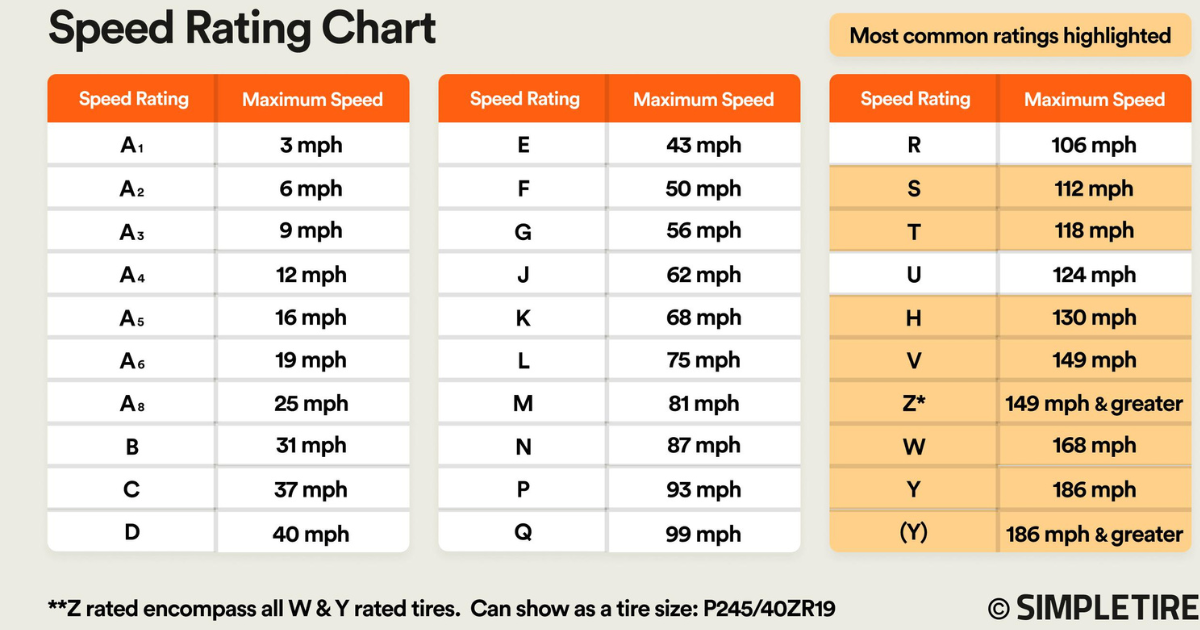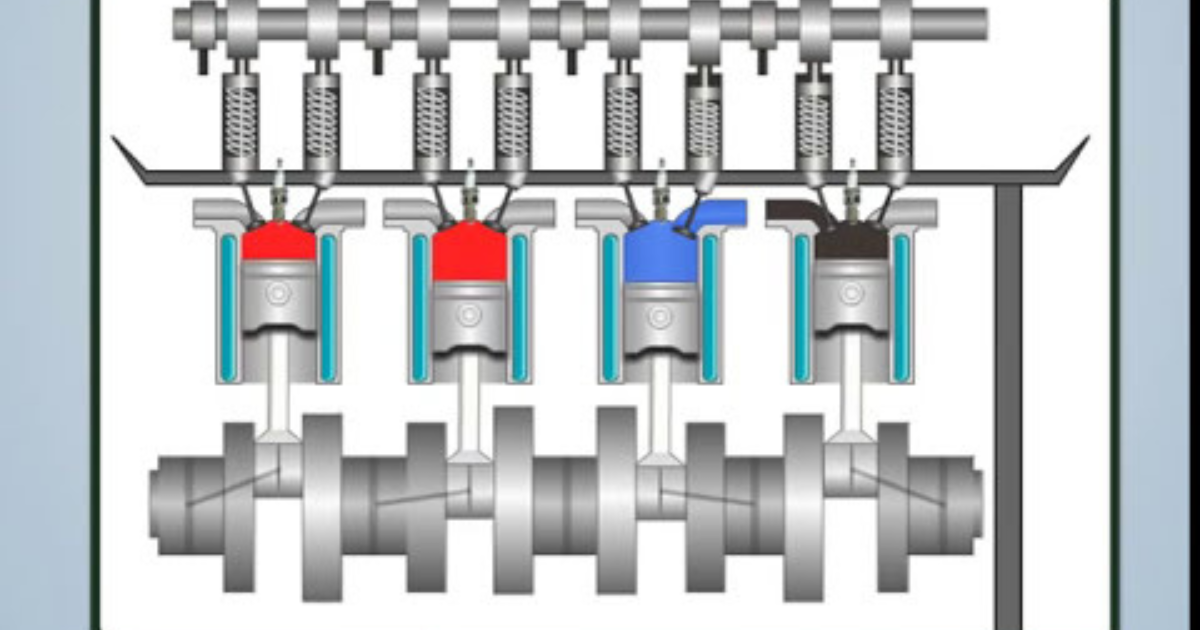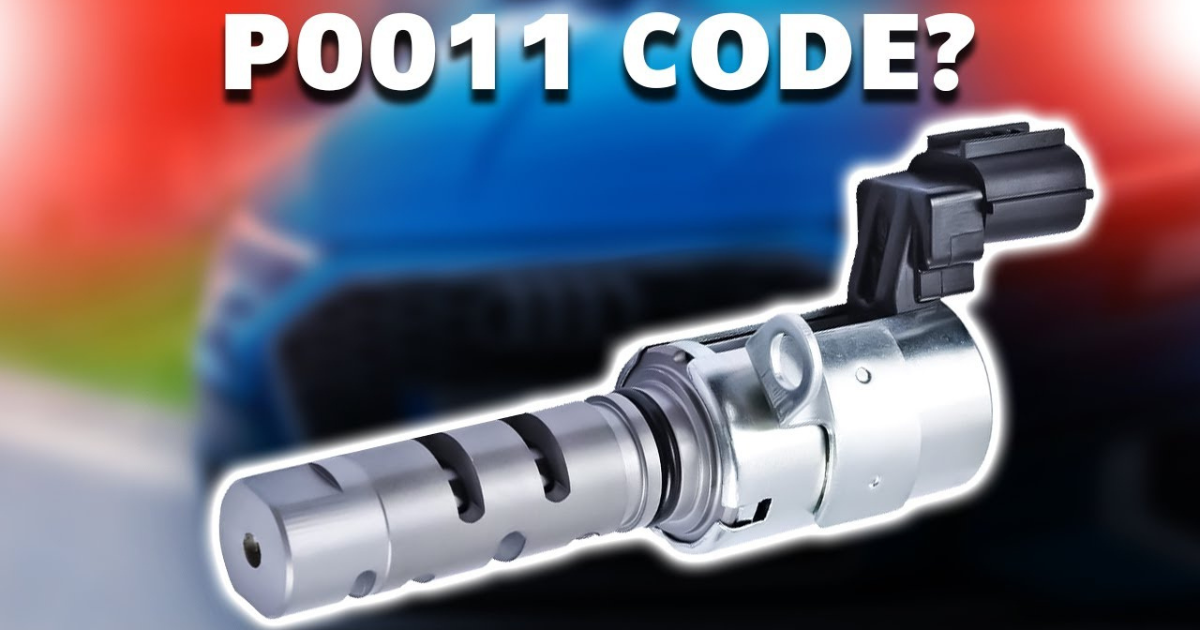A tire’s speed rating is the maximum safe speed at which it can maintain a load for an extended period of time under ideal conditions. The load is the sum of the vehicle’s initial weight and the mass of all its cargo. Europe was the birthplace of the tire speed rating system in the ’60s. Its original intent was to regulate the secure operation of tires at specified velocities.
Tire Description

A service description is another name for it. The sidewall of a tire usually contains most of the pertinent information. Numbers and letters imprinted into the rubber typically constitute the data. The information conveyed by these letters and numbers on your tire’s properties is crucial.
TIRE DESCRIPTION
| 215/65R 15 95H | |
| 215- Section Width in Millimeters | |
| 65- Aspect Ration | |
| R- Radial Construction | |
| 15- Rim diameter in Inches | |
| 95- Load Index | |
ZR Designation
ZR is a speed classification that tires can use if their maximum speed is more than 149mph. V, W, and Y are the tire speed ratings included in ZR tires. The letter “V” indicates that the tire is suitable for use at speeds more than 149 miles per hour. The tire’s W rating indicates that it is suitable for usage with vehicles capable of reaching a maximum speed of 168 mph.
The tire is designed for vehicles capable of reaching a maximum speed of 186 mph, as indicated by the speed rating Y.
| EXAMPLES | |
| Tire Designation | Maximum Speed |
| 205/45R17 88W | 270km/h (168mph) |
| 205/45R17 88Y | 300km/h (186mph) |
Tire Speed Rating chart
Tire speed ratings are indicated by the letters in this chart. Better heat management and faster speeds are associated with tires with higher alphabet ratings. H, on the other hand, is unique. As a special case to accommodate the market’s older tires, the H-speed rating will remain at 130 mph. The majority of motorists keep their speed well below the limits set by the tire speed rating H.
The symbols and their mph translation are below.
| SPEED SYMBOLS | ||
| Symbol Speed | Speed (km/h) | Speed (mph) |
| A1 | 5 | 3 |
| A2 | 10 | 6 |
| A3 | 15 | 9 |
| A4 | 20 | 12 |
| A5 | 25 | 16 |
| A6 | 30 | 19 |
| A8 | 40 | 25 |
| B | 50 | 31 |
| C | 60 | 37 |
| D | 65 | 40 |
| E | 70 | 43 |
| F | 80 | 50 |
| G | 90 | 56 |
| J | 100 | 62 |
| K | 110 | 68 |
| L | 120 | 75 |
| M | 130 | 81 |
| N | 140 | 87 |
| P | 150 | 94 |
| Q | 160 | 100 |
| R | 170 | 106 |
| S | 180 | 112 |
| T | 190 | 118 |
| U | 200 | 124 |
| H | 210 | 130 |
| V | 240 | 149 |
| W | 270 | 168 |
| Y | 300 | 186 |
Conclusion
The speed rating of a tire is not only about how fast it can go. Performance is also a part of it. Your tires’ heat dissipation, traction, cornering, and swerving capabilities are often what determine their performance. Always go with the manufacturer-recommended speed-rated tire.
Keep tires with differing top speeds apart. To mix and match, put the tires with lower speed ratings on the front axle. Optimal tire pressure monitoring is always an option. In extremely cold weather, like winter, downgrading is your only option. During winter, it is advisable to use tires with a Q-rated.
There are other factors besides the tire’s speed rating that establish its actual capacity. This is because the Tire Speed rating relies on computer models run in a controlled environment. Pick a tire that’s suitable for the speed you’ll be traveling at. Improving the tread life of the tire also requires regular maintenance. Finally, regardless of your tire speed rating, you are always required to observe the law.





